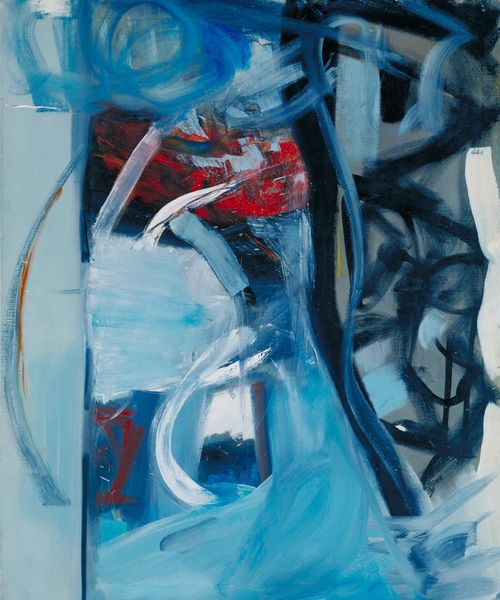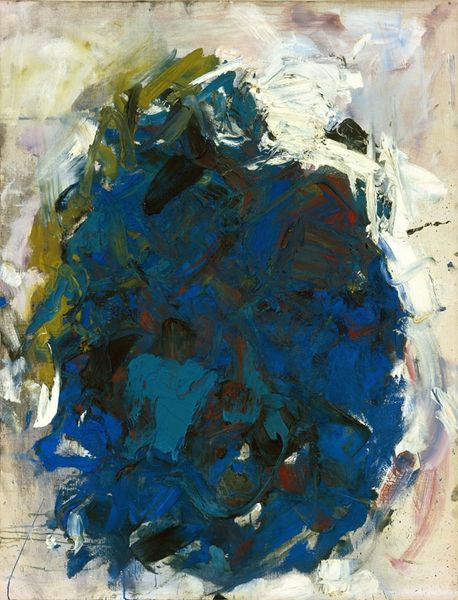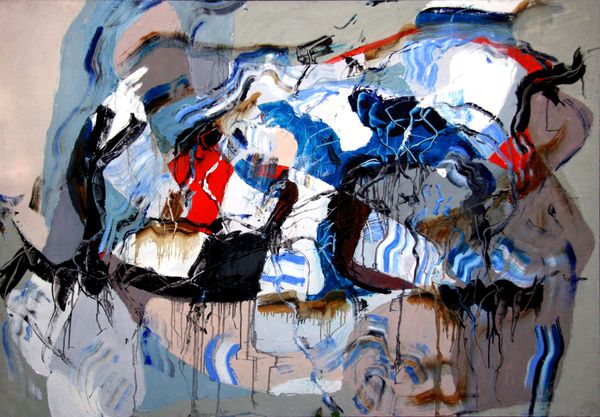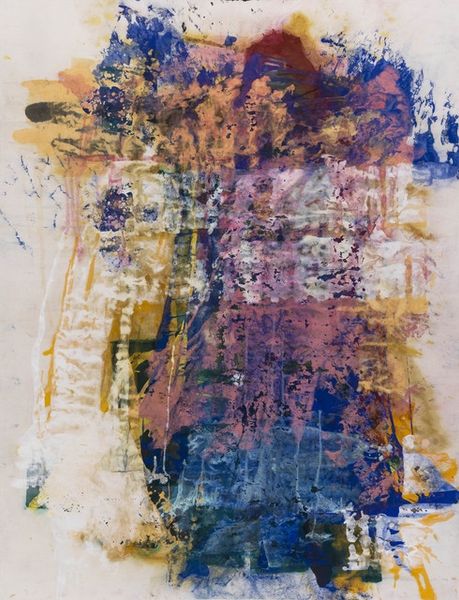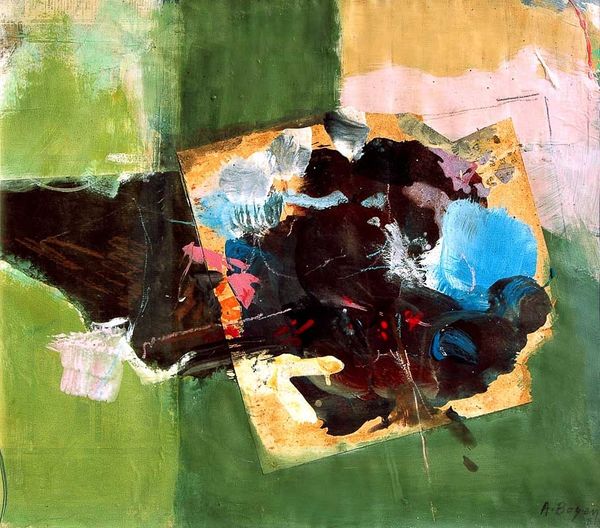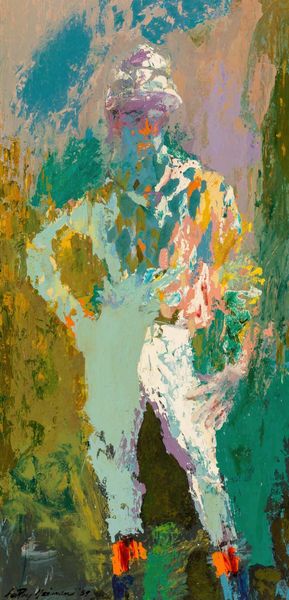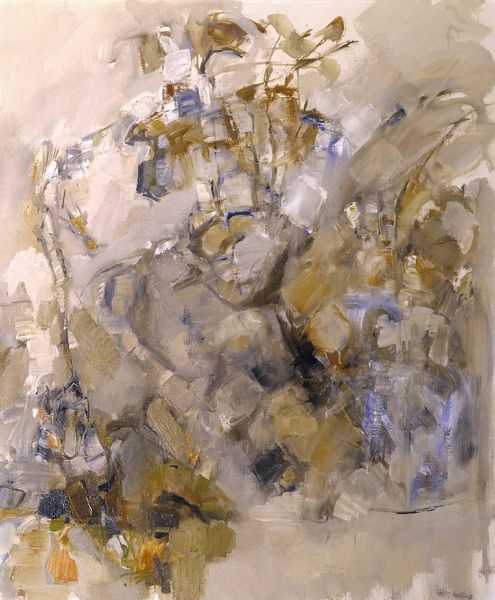
Copyright: Alexander Bogen,Fair Use
Editor: Alexander Bogen's "Abyss," created in 1981 with acrylic paint, presents this compelling dance of blues and reds. It's evocative, almost like looking into turbulent water. How do you interpret this work? Curator: "Abyss" certainly speaks to the socio-political climate of the early 80s. The neo-expressionist movement was a direct response to the perceived coldness of minimalism and conceptual art. Artists sought to reclaim emotional depth and personal expression. Do you notice any visual tension? Editor: I see what you mean; the clashing colors and almost violent brushstrokes create tension. There is some kind of red and black gash, countered by lighter swathes of blue and sage green. It is almost as if Bogen wanted to paint the feeling of discord. Curator: Exactly. This discord resonated with a generation facing anxieties about nuclear proliferation, economic instability, and shifting social values. The very act of applying paint so gesturally became a kind of defiant assertion of human agency in a world that felt increasingly out of control. Editor: So, this raw application is really crucial to understanding the work? Curator: Absolutely. It isn't just about aesthetics. Think about the role of galleries and museums during this period. They were providing spaces for artists to challenge conventions and grapple with complex issues, providing a form of political commentary, often challenging established structures of power and influence. Do you get that feeling here? Editor: I definitely see how Bogen is challenging established modes, through art, I hadn't previously considered neo-expressionism in that light! Thank you. Curator: It's crucial to view art as more than just objects; they are documents, sometimes even weapons, reflecting and shaping society. Food for thought.
Comments
No comments
Be the first to comment and join the conversation on the ultimate creative platform.

